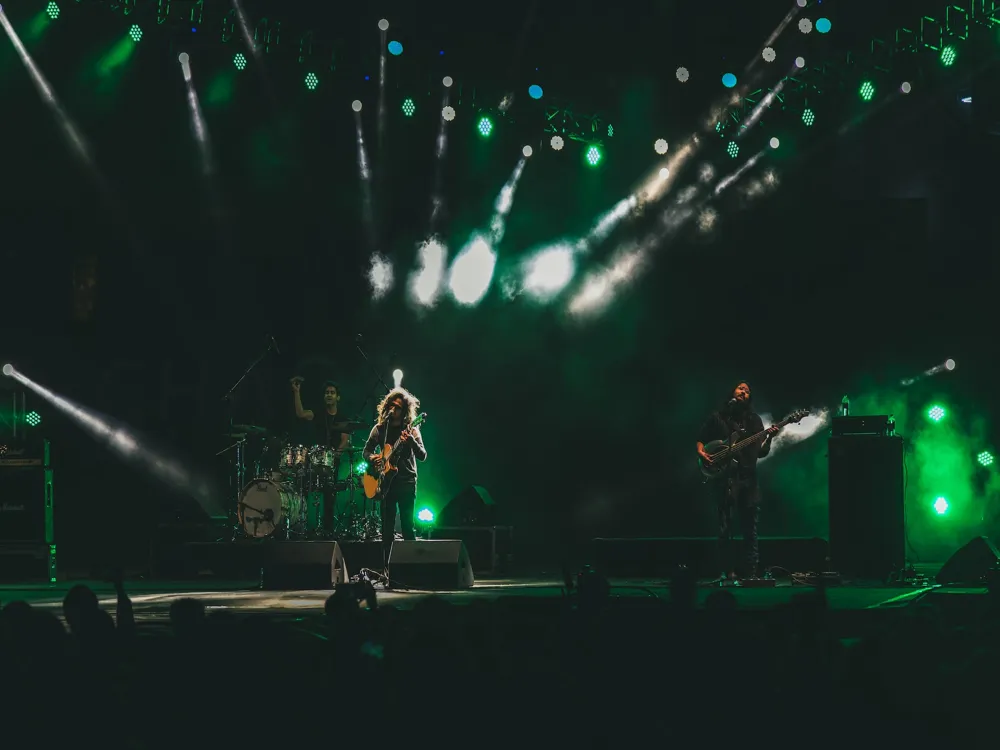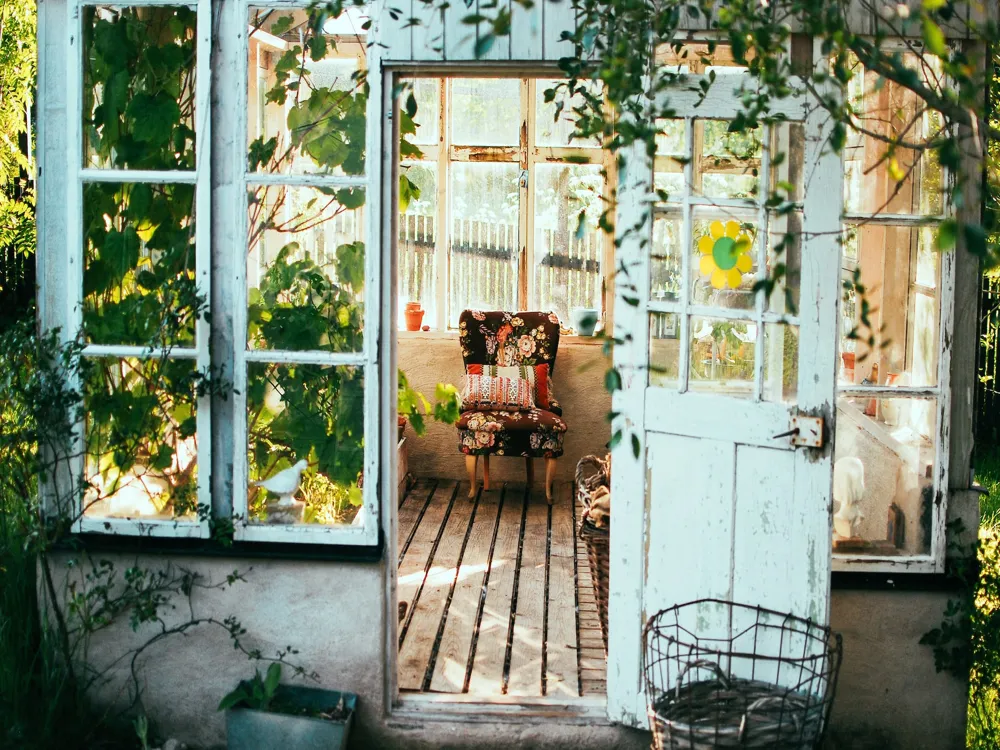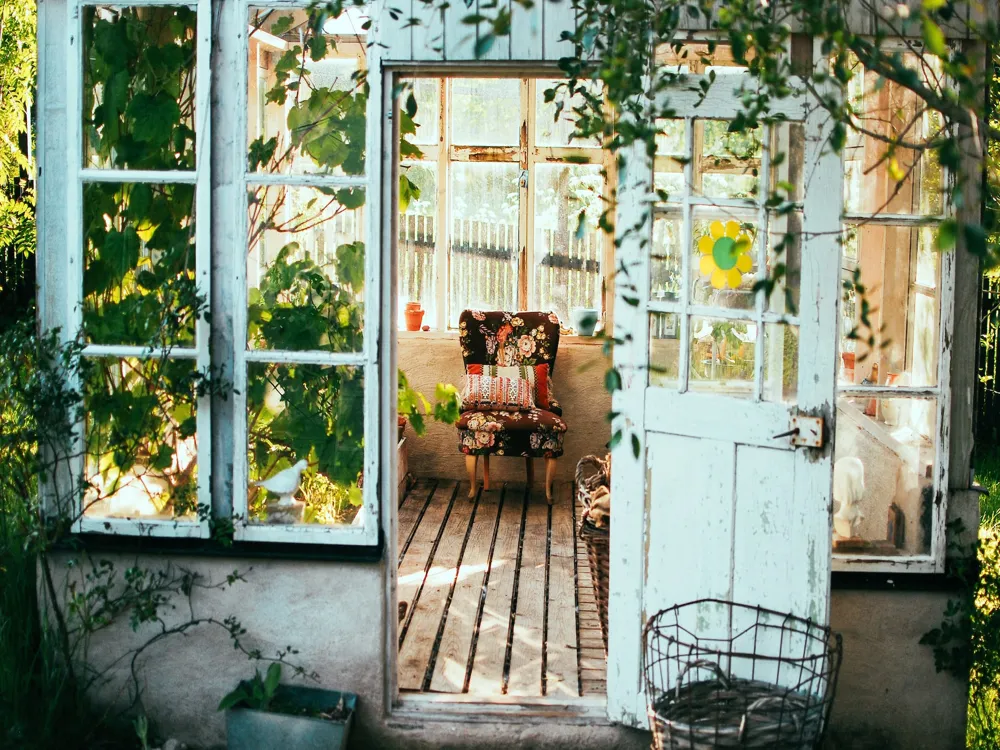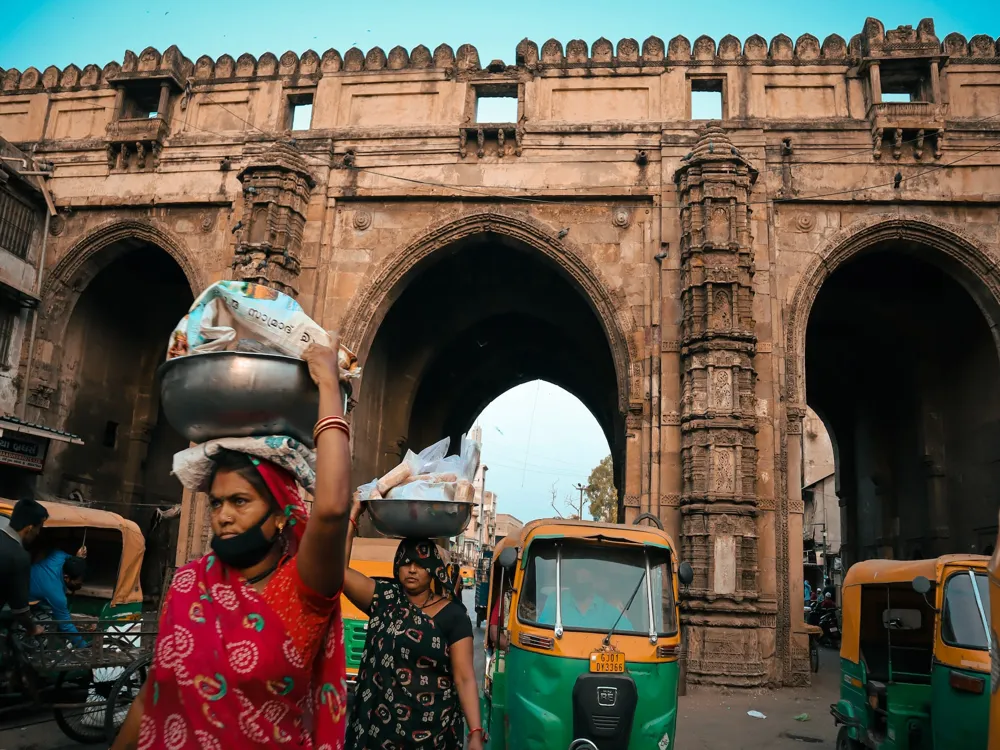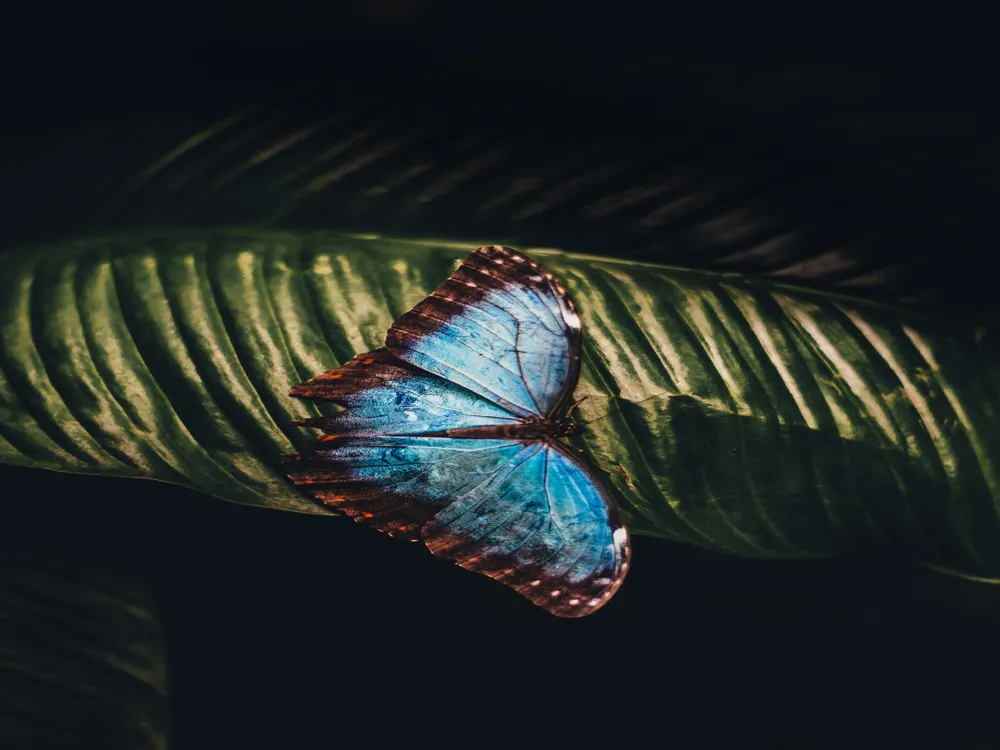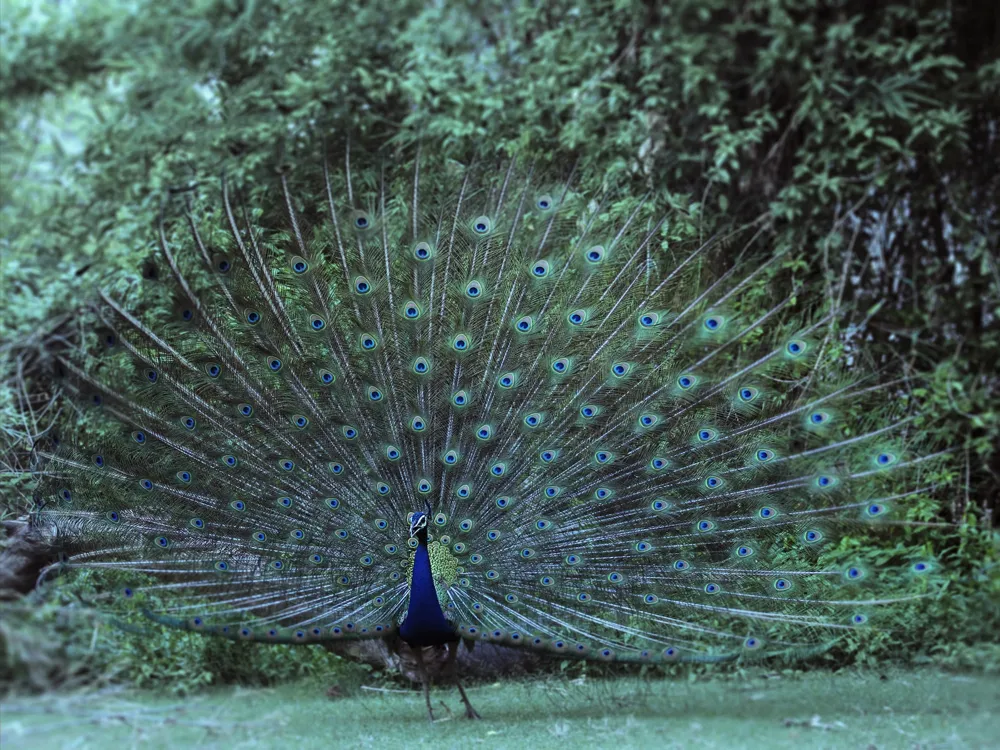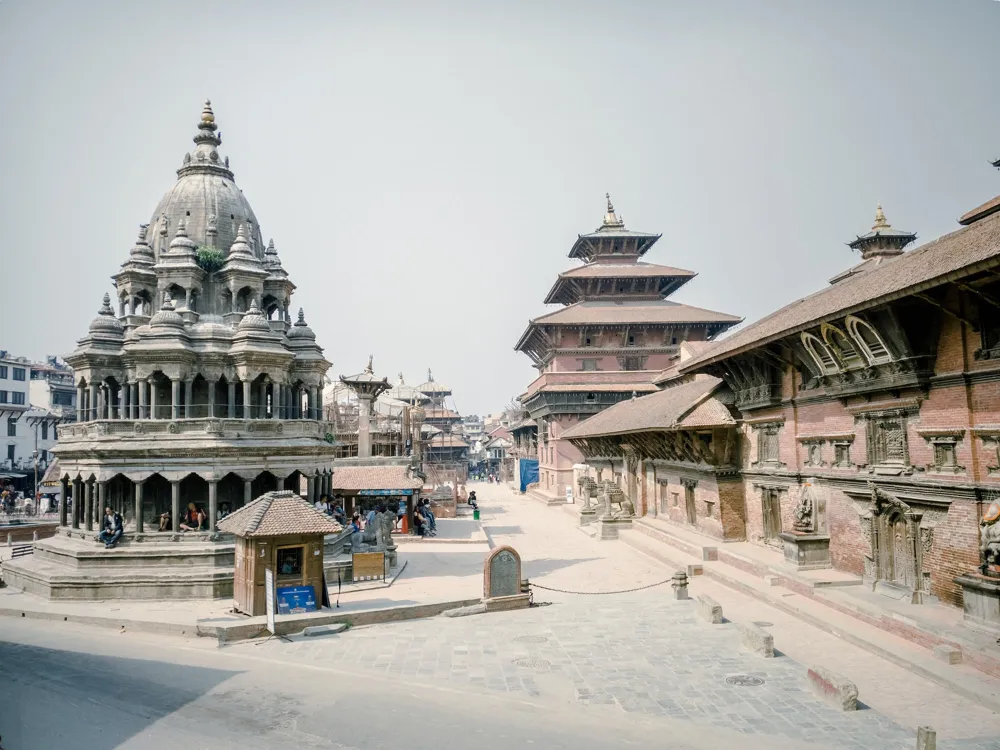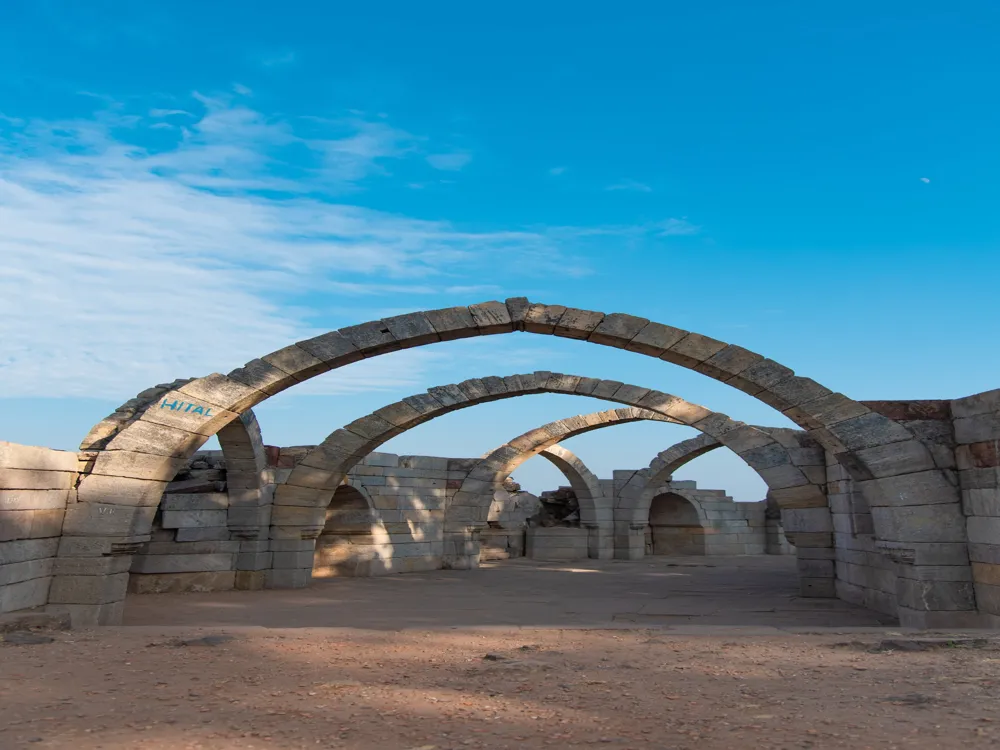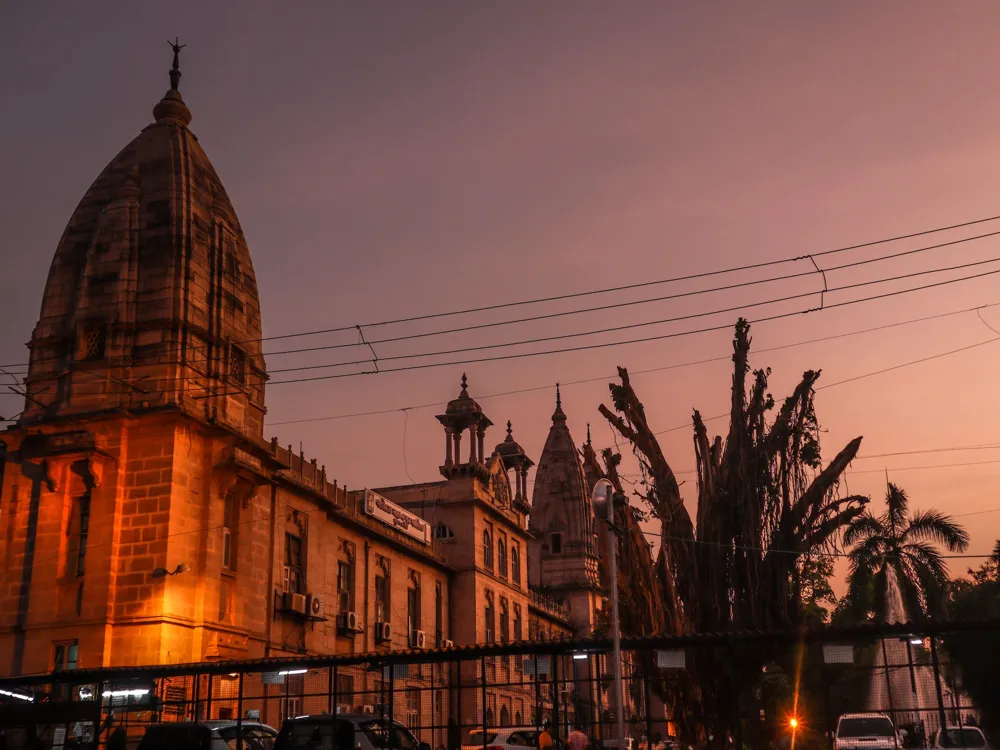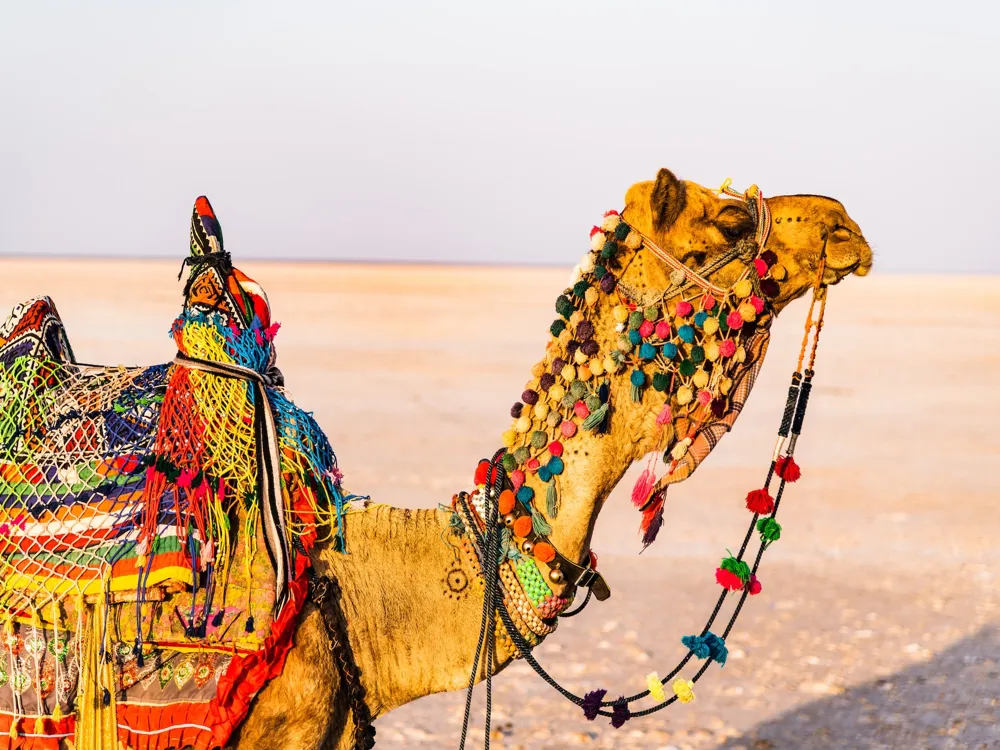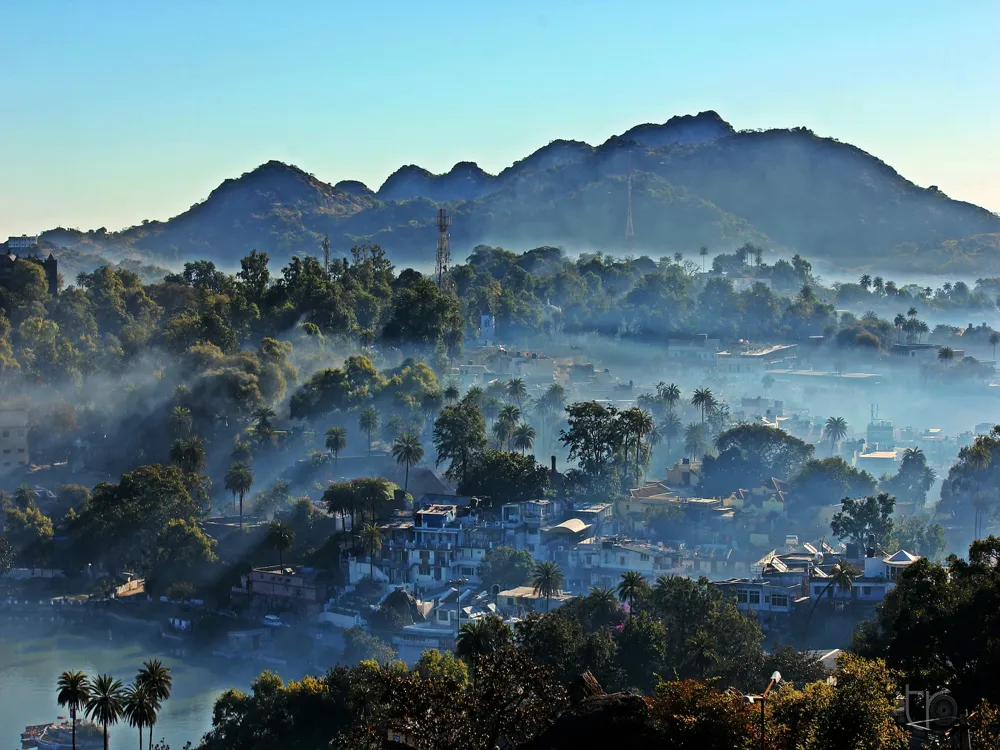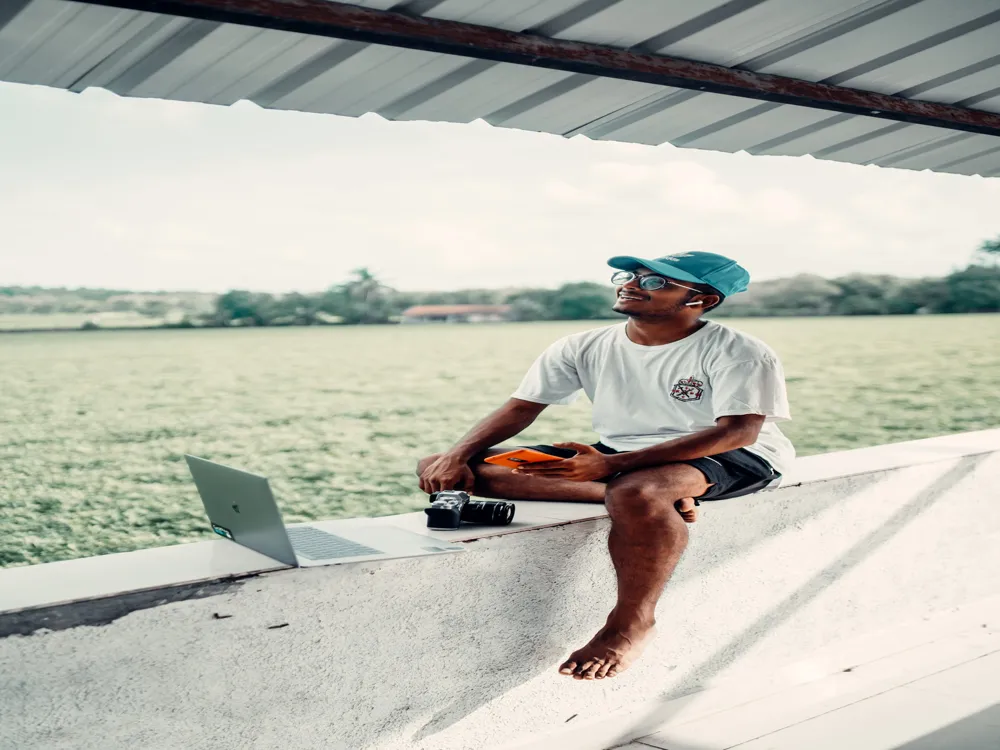The Calico Textile Museum, located in the heart of Ahmedabad, Gujarat, stands as a testament to India's rich textile history. Established in 1949 by Gautam Sarabhai and his sister Gira Sarabhai, the museum is housed in one of the finest examples of Gujarati havelis, reflecting the architectural splendor of the region. The museum showcases an extensive collection of textiles dating back to the 17th century, including rare fabrics, tapestries, costumes, and antique looms. The collection not only highlights the artistic brilliance of Indian weavers but also tells the story of India's socio-economic and cultural fabric. Visitors are greeted by an array of vibrant textiles, each telling a unique story of the regions and communities of India. The museum's collection includes exquisite examples of tie-and-dye, block prints, and embroideries from various parts of India, along with tribal textiles that speak of a rich, yet vanishing, cultural heritage. The Calico Museum also has an impressive library that provides in-depth insights into the history and techniques of textile manufacturing and design. The museum is not just a repository of textiles but a living, breathing entity that continues to inspire designers, historians, and art lovers globally. The architecture of the Calico Textile Museum is a blend of traditional Gujarati design with elements of contemporary style, making it a visual treat for visitors. The museum is set in a reconstructed haveli, a traditional Gujarati mansion, which adds to the authenticity of the experience. The use of intricately carved wooden facades, jalis (latticed screens), and courtyards reflect the typical architectural elements of a Gujarati haveli. One of the remarkable features of the museum is the way it harmoniously blends with its surroundings. The layout of the museum is thoughtfully designed to facilitate a smooth flow of visitors, ensuring that each exhibit gets the attention it deserves. The use of natural lighting through strategically placed windows and the integration of indoor and outdoor spaces provide a serene and contemplative environment, perfect for appreciating the artistry of the textiles on display. Before visiting the Calico Textile Museum, it's advisable to check the official website for the latest information on opening hours and any special events or exhibitions. Photography is generally restricted within the museum, so be prepared to store your cameras and mobile phones before entry. The museum offers guided tours which are highly recommended for a comprehensive understanding of the exhibits. Visitors are expected to dress modestly, keeping in mind the cultural sensibilities of the region. Comfortable footwear is recommended as the museum involves a fair amount of walking. It's important to maintain decorum within the museum premises and avoid touching the exhibits. The museum is accessible to wheelchair users and has basic facilities like restrooms and a small cafeteria. However, it's best to carry your water bottle and snacks, as options inside the museum are limited. The Calico Textile Museum is easily accessible from various parts of Ahmedabad. It's located in the Shahibaug area, which is well-connected by public transport. Visitors can use city buses, auto-rickshaws, or taxis to reach the museum. For those preferring a more comfortable ride, app-based cab services are readily available throughout the city. The nearest railway station is the Ahmedabad Junction, and the Sardar Vallabhbhai Patel International Airport is just a short drive away, making the museum accessible for both domestic and international tourists. Read More:Overview of the Calico Textile Museum of Ahmedabad, Gujarat
Architecture of Calico Textile Museum
Tips When Visiting Calico Textile Museum
Planning Your Visit
Dress Code and Etiquette
Accessibility and Facilities
How To Reach Calico Textile Museum
Calico Textile Museum
Ahmedabad
Gujarat
NaN onwards
View ahmedabad Packages
Weather :
Tags : Museum
Time Required : 2-3 hours
Timings : 10:30 AM to 1:00 PM
Closed on Wednesdays and Public Holidays
Entry Fee : None
Planning a Trip? Ask Your Question
Ahmedabad Travel Packages
View All Packages For Ahmedabad
Top Hotel Collections for Ahmedabad

Private Pool

Luxury Hotels

5-Star Hotels

Pet Friendly
Top Hotels Near Ahmedabad
Other Top Ranking Places In Ahmedabad
View All Places To Visit In ahmedabad
Faq on Ahmedabad
What is Calico Textile Museum Ahmedabad?
The Calico Textile Museum in Ahmedabad is a renowned institution dedicated to preserving and showcasing the rich heritage of textile arts in India, particularly in the state of Gujarat.
What can visitors expect to see at Calico Textile Museum Ahmedabad?
Visitors can expect to see a diverse collection of textiles including rare fabrics, traditional garments, exquisite embroidery, and historic artifacts related to textile production and design.
What is the significance of Calico Textile Museum Ahmedabad?
The museum is significant for its role in preserving and promoting India's textile heritage, showcasing the craftsmanship and artistic traditions that have been passed down through generations.
Are there guided tours available at Calico Textile Museum Ahmedabad?
Yes, guided tours are available for visitors to provide insights into the exhibits and the history of textiles in Gujarat and India.
How long does it take to explore Calico Textile Museum Ahmedabad?
The time it takes to explore the museum may vary depending on individual interests, but typically visitors spend around 1 to 2 hours exploring the exhibits.
View ahmedabad Packages
Weather :
Tags : Museum
Time Required : 2-3 hours
Timings : 10:30 AM to 1:00 PM
Closed on Wednesdays and Public Holidays
Entry Fee : None
Planning a Trip? Ask Your Question
Ahmedabad Travel Packages
View All Packages For Ahmedabad
Top Hotel Collections for Ahmedabad

Private Pool

Luxury Hotels

5-Star Hotels

Pet Friendly
Top Hotels Near Ahmedabad
Other Top Ranking Places In Ahmedabad
View All Places To Visit In ahmedabadFaq on Ahmedabad
What is Calico Textile Museum Ahmedabad?
The Calico Textile Museum in Ahmedabad is a renowned institution dedicated to preserving and showcasing the rich heritage of textile arts in India, particularly in the state of Gujarat.
What can visitors expect to see at Calico Textile Museum Ahmedabad?
Visitors can expect to see a diverse collection of textiles including rare fabrics, traditional garments, exquisite embroidery, and historic artifacts related to textile production and design.
What is the significance of Calico Textile Museum Ahmedabad?
The museum is significant for its role in preserving and promoting India's textile heritage, showcasing the craftsmanship and artistic traditions that have been passed down through generations.
Are there guided tours available at Calico Textile Museum Ahmedabad?
Yes, guided tours are available for visitors to provide insights into the exhibits and the history of textiles in Gujarat and India.
How long does it take to explore Calico Textile Museum Ahmedabad?
The time it takes to explore the museum may vary depending on individual interests, but typically visitors spend around 1 to 2 hours exploring the exhibits.







